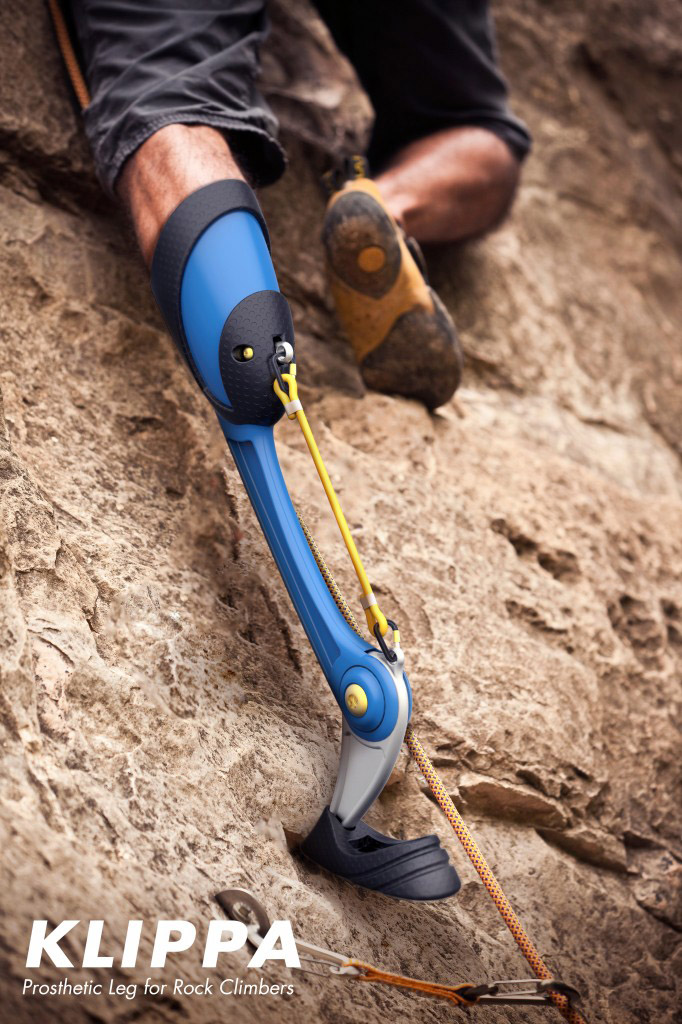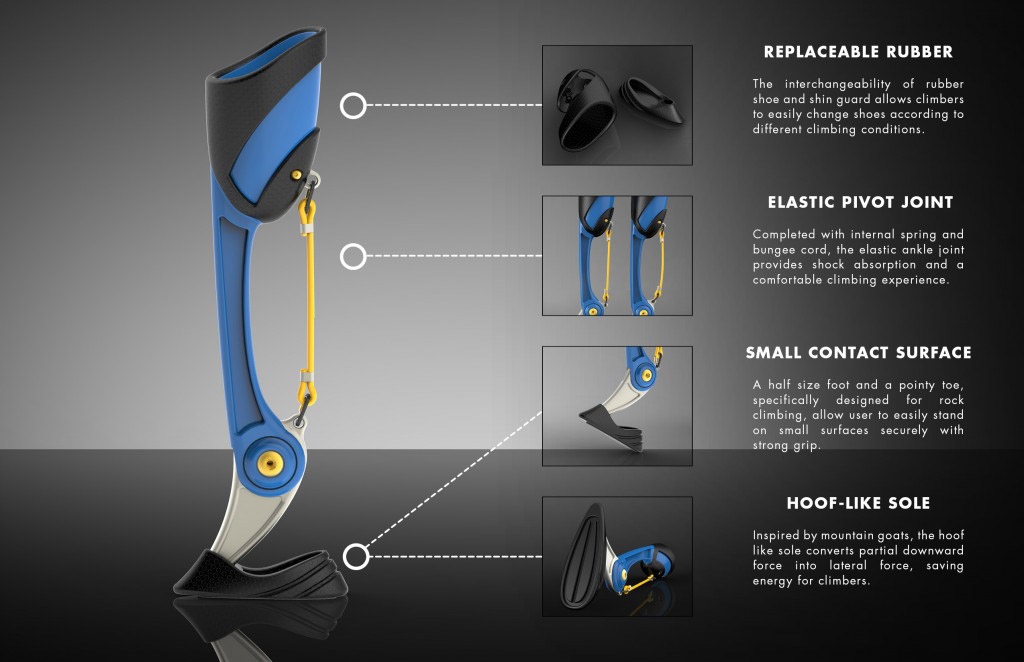 If you re-designed the human foot to be better for rock climbing, wouldn’t you look at mountain goats for inspiration? Kai Lin studied the goats’ hooves and anatomy, and combined their best attributes with the ways humans move to design a rock-climbing-specific prosthetic leg that could change the way amputees approach the sport. We caught up with Lin—a third-year design student at the Pratt Institute—to find out how he took his idea from a creative inspiration to a workable reality.
If you re-designed the human foot to be better for rock climbing, wouldn’t you look at mountain goats for inspiration? Kai Lin studied the goats’ hooves and anatomy, and combined their best attributes with the ways humans move to design a rock-climbing-specific prosthetic leg that could change the way amputees approach the sport. We caught up with Lin—a third-year design student at the Pratt Institute—to find out how he took his idea from a creative inspiration to a workable reality.
What motivated you to design a prosthetic?
My motivation is from articles I read online about how wounded soldiers from Iraq and Afghanistan with missing limbs were able to conquer obstacles and regain their health. Their willpower and strength really moved me and I knew that I wanted to design something for them. There have been a few advanced prosthetic legs out in the market for veterans to help them with walking and daily activities. But I wanted to do something different, something that helps wounded soldiers stay physically active and enjoy their lives. That’s why I chose to design a prosthetic for climbing.
What was the inspiration for the Klippa?
The whole idea started when I came across this article about how bunch of mountain goats in Italy can climb a nearly vertical dam. The pictures were quite shocking and I thought, if goats can do it, why can’t humans? So I decided to design prosthetic leg that can make amputees climb as well as—if not even better than—mountain goats do.

Are you a climber?
I am not experienced with rock climbing, but I am a fan of running. I also have a few friends who are into hiking. Once a while, we take the train up and hike along the Hudson River.
Since you’re not much of a climber, how did you figure out what types of movement the prosthetic would need to be able to do?
From the very beginning, I understood that in order to design a prosthetic leg for rock climbers, I needed to research different types of footwork and how experienced rock climbers utilize these techniques. So I interviewed a few climbers, asking them about how they use their feet, ankles and thighs when they climb. I also tried on some blue foam stilts to test how it feels when there is no feedback coming from your feet. Lastly, I wanted to incorporate the features of mountain goats, such as their cloven hooves, into my design to give amputee rock climber advantages that climbers with human feet do not have. My sketches started with human-like design and gradually moved on to a more bio-mimetic look.
What was the creative process like?
The process started with exploration of different topics and design opportunities. Once I defined my design subject, I moved on to research, testing, sketches, prototypes and then final design. The whole process took me about two and a half months to finish.
What inspires you in general, and what do you like to design?
As a designer, the three key elements I value the most are aesthetics, functionality and innovation. I want to design products that are beautiful and pleasant to look at. At the same time, the products have to have intuitive and natural interface, so people can easily understand how to use it. Lastly, I would like to bring something new to the table through my design so people can be like, “Wow, I have never seen anything like this and I never though it could be used this way.”
Tell us about yourself—where are you from?
I grew up in Fuzhou, China, and my family moved to Queens, NY when I was 15. I’m currently a 3rd year industrial design student studying at Pratt Institute. I want to design products that integrate wearable technology (such as Google watch, or clothes that monitor heart rate) after graduation.
What’s next for the Klippa?
The next step for Klippa is to find some clients and do some real testing with it. Everything is still conceptual at this stage, and a lot of details still need to be figured out before I can consider putting it on the market, such as what materials to use, or how to securely attach the leg to someone’s residual limb. The prosthetics company Otto Bock came to my school and reviewed my work. They really liked my design and thought it had the potential to be developed further.

What’s next for you?
I haven’t decided on what I would design next, but I’m planning on doing something that uses current technology to better our lives and help us stay physically and mentally healthy.
What’s one lesson you’ve learned in your design/art work that you can share with other creatives who are pursuing the same?
Never make assumptions when you design for specific clients. Talk to them, do some research and ask for their feedback.
Check out more of Lin’s work at https://www.behance.net/Kailin.
